The weather forecast for our favorite spot, Amboy Crater, called for decent conditions but high winds. (Why do we care about the wind? Here are four reasons I can think of: simple comfort, blowing charts and equipment, maintaining a target in a telescope, and blowing dust.)
The best forecast in the area was at our old favorite spot in the Colorado Desert south of Joshua Tree National Park, an area of BLM land below Chuckwalla Mountain called Chuckwalla Bench. We had mostly abandoned Chuckwalla Bench because the unmaintained dirt road (Red Cloud Mine Rd.) was getting a bit treacherous. Someone suggested a different road, following a nearby train track, that got us to the same observing spot a lot more reliably.
Conditions seemed near perfect, with calm to light winds, clear skies, comfortable temperatures, and pretty good seeing. The nighttime temperatures may have dipped a bit below 60 degrees F, but not a lot.
Jane had our 14.5-inch dob, and reported that visual observing conditions were quite excellent. Her report is fabulous, and I wish I’d tried for those low southern objects! The Chuckwalla Bench location does have a light dome to the south, but nothing ventured …. [Read Jane’s report here.]
I started with a galaxy in Leo that I shot last month, M65. Since shooting it last month, a supernova was discovered in the galaxy. I did one 15-minute exposure, and had fun today making a “blink comparitor” animation. Can you see the supernova?
At the end of the post, I’ll mark where it is. 
Being spring, I wanted to collect some galaxies. I started with a string of galaxies in the nearby Virgo cluster, called Markarian’s Chain. The chain extends from the middle-right of the image, to the left and upward. In the lower left corner is giant elliptical galaxy M87.
Then I wanted to try for something a little more distant, and did 45 minutes on a remote galaxy cluster with the catalog number of Abell 2151, found in the constellation of Hercules. This is a group of about 200 galaxies some 500 million light years distant.

Galaxy cluster in Hercules known as Abell 2151. This compact view doesn’t show them well, but click on the image for full resolution, and pan around to see if you can find some distant spirals.
Finally comet C/2011 L4 (PANSTARRS) has been moving toward the north celestial pole, and right now it’s easier to catch before dawn than after sunset. After napping for a while, we found the comet at about 4:00 a.m. Here’s my first five-minute exposure.
I did a series of several 5-minute exposures, and stitched them into a GIF animation. If you look carefully, you can see the motion of the comet against the background stars. The other rather obvious feature is the coming dawn light as the sky turns brighter and very blue. 
And finally, if you didn’t find the supernova in my “blink” animation above, it’s marked for you here.
If you follow us on Twitter or Facebook, you know that we finally replaced our intrepid green 1998 Dodge Grand Caravan with a new-to-us 2012 Grand Caravan. We purchased it from Carmax with 5,200 miles on the odometer, and this was its first official astronomy outing. Carmax disclosed that the previous owner used it in “fleet” operations.
Of course the van was pristine when we took possession, but the molecular residue of some adhesives may never vanish, though invisible on ordinary glass. After two miles of dusty dirt road in Chuckwalla Bench, I said to Jane, “I know who the van’s first owner was!” This is what I saw on the back window of Earl the Grey Caravan.


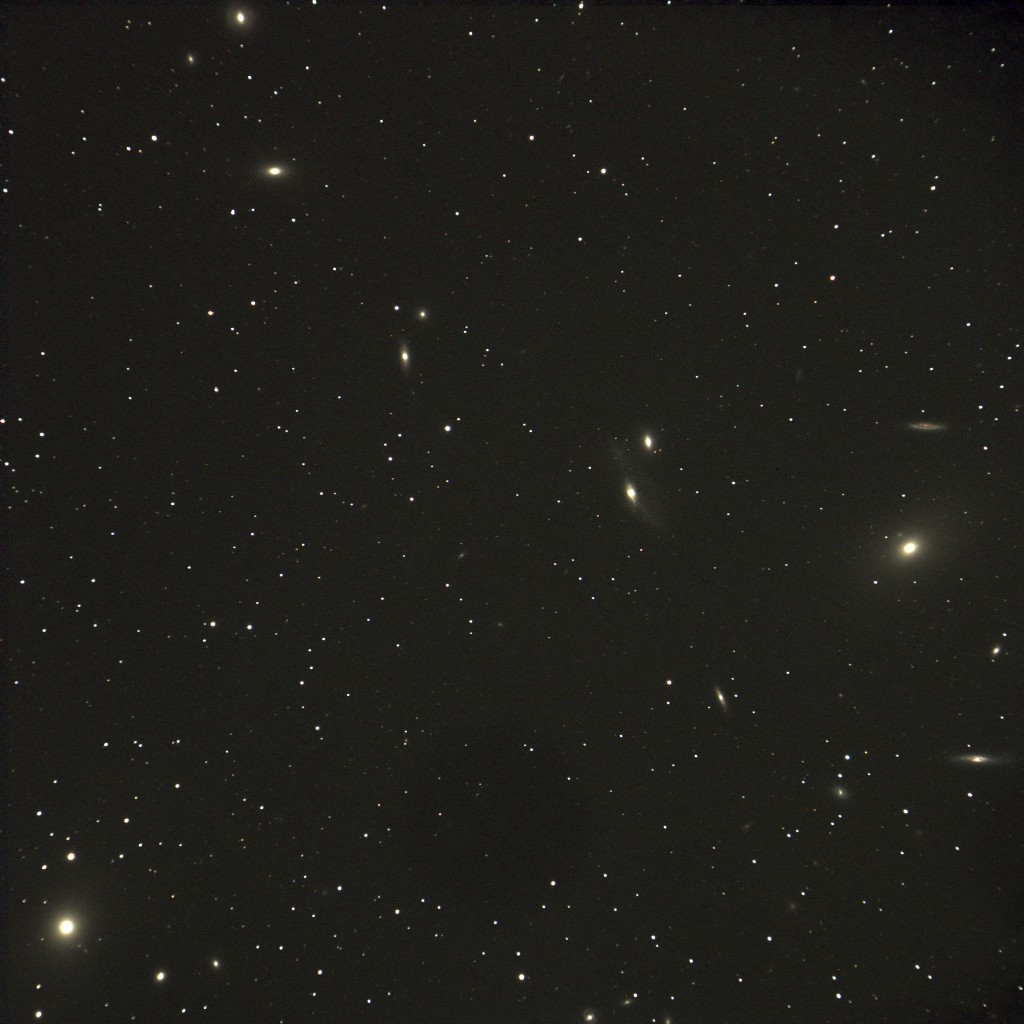
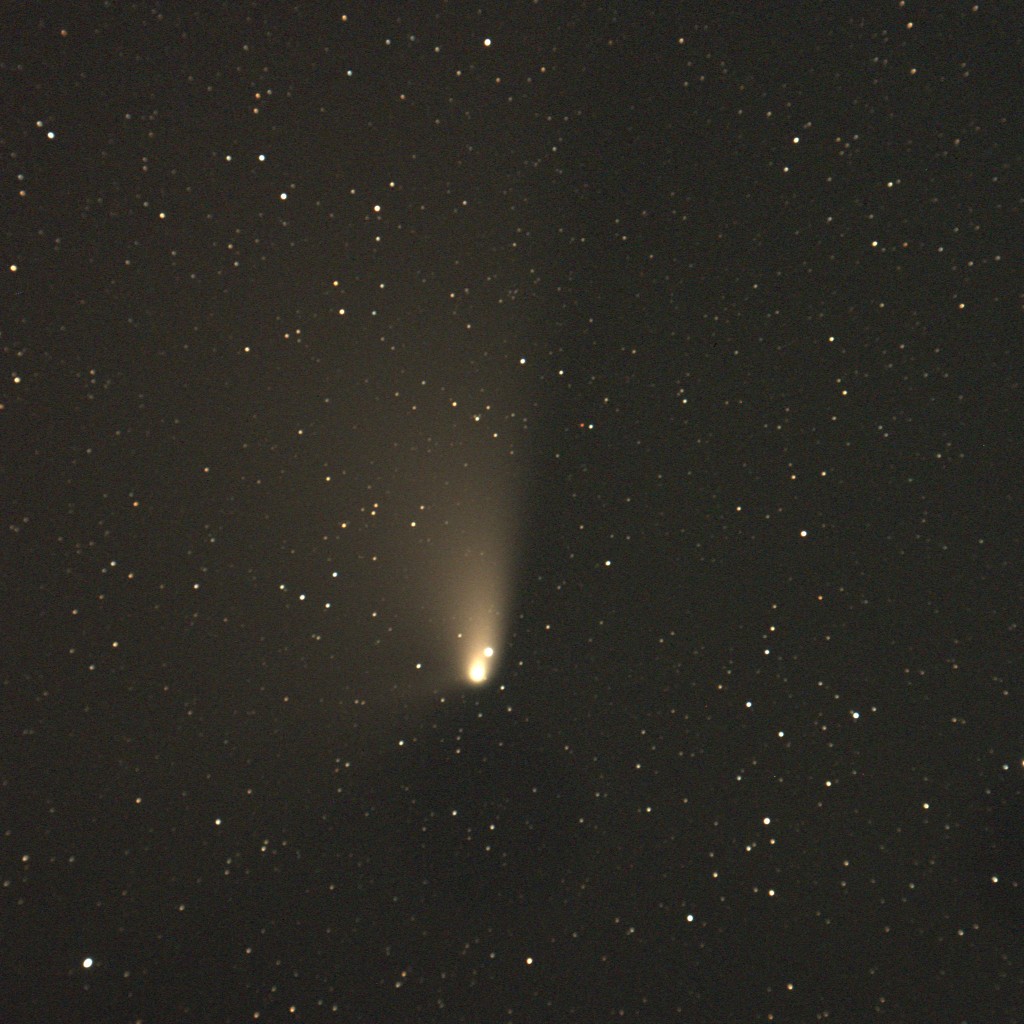
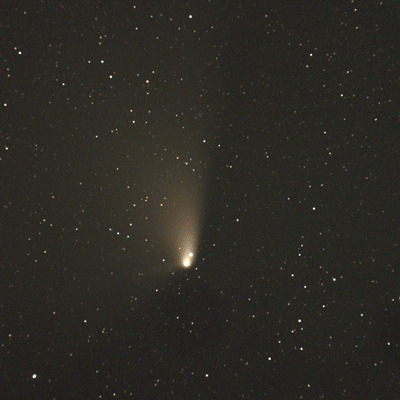
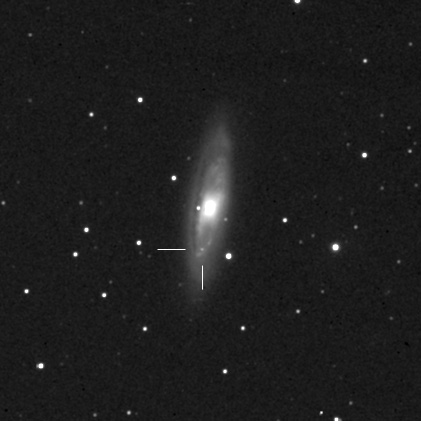
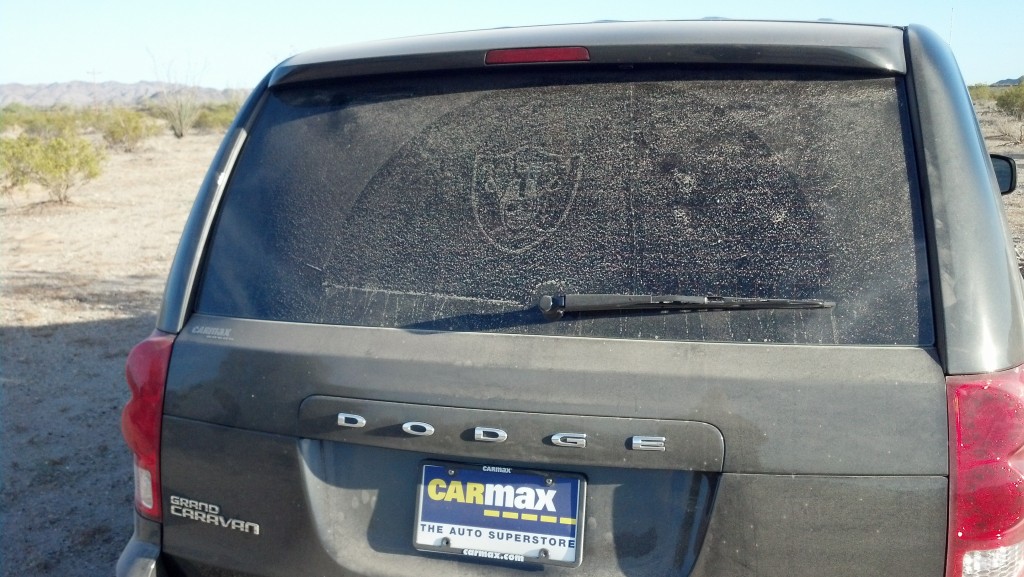
[…] Mojo’s images and report from the same night […]